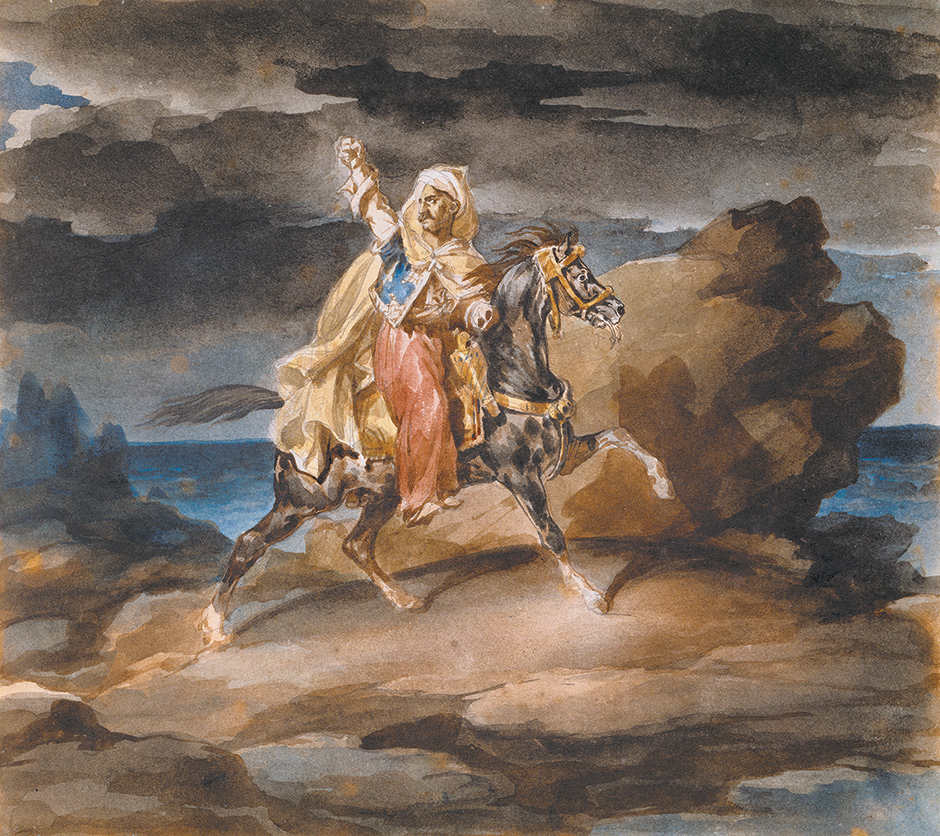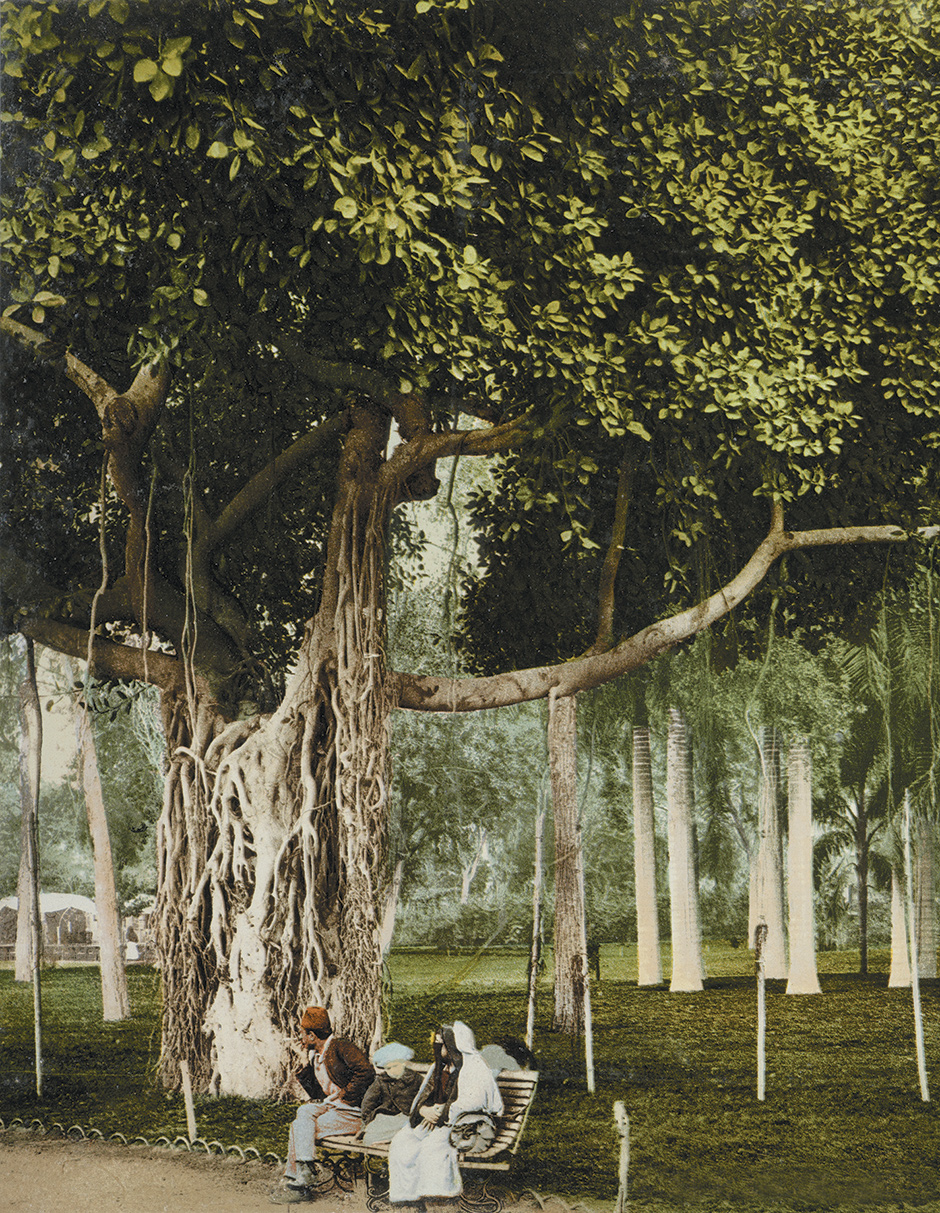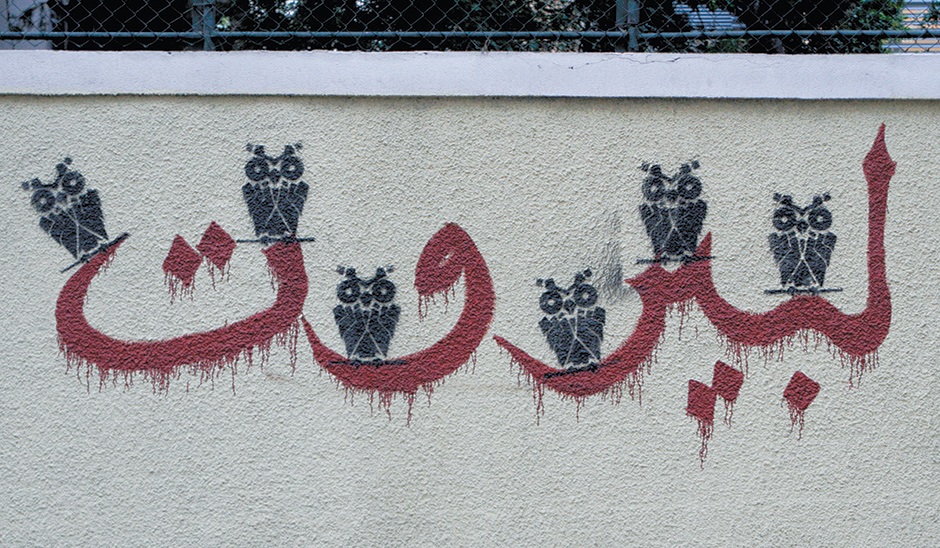Published in Paris in 1855, Ahmad Faris al-Shidyaq’s Leg Over Leg is often called the first novel written in Arabic. It does not read at all like Little Dorrit, whose first installment was published the same year, and certainly not like Madame Bovary, published two years later, but “novel” is as good a word as any to describe it. What else should we call a fiction with chapters of rhyming prose, countless dirty jokes and digressions, an elegy for a donkey, long lists of rare words for genitalia, perfumes, and games played by children, all hung on the frame of a travelogue to Egypt, Malta, England, and France? Al-Shidyaq knew that he was up to something new. He called his book “an innovation singular beyond compare.”
Born to a Christian family in an Ottoman province of modern-day Lebanon, al-Shidyaq could not have published Leg Over Leg in his homeland, mostly because of what he had to say about religion. The Arabic word bid‘, or “innovation,” which he uses many times to describe his novel, means both “literary novelty” and “heresy.” Al-Shidyaq guessed what the reaction to his work would be. The novel’s first pages imagine its author caught in a crowd of howling priests, who accuse him of blasphemy and demand that the book be burned. In response, al-Shidyaq spends several pages listing euphemisms for “vagina,” taken from a medieval Arabic dictionary: “the sprayer,” “the gripper,” “the large floppy one,” etc. This is followed by lists for “penis” (“the falcon’s stand,” “the big spider,” “the little man”), the anus (“the toothless one,” “the catapult,” “the whistler”), and intercourse (“to stick the kohl-stick in her kohl pot”).
In the long view, of course, none of this was entirely new. Classical Arabic poetry has a genre called sukhf, dedicated to sexual obscenity and scatology, whose heresies are hard to match. “I entered the prayer niche of her asshole,” sings the tenth-century poet Ibn al-Hajjaj, “and went cross-eyed from the smell of saffron.”1 Al-Shidyaq knew this tradition well. In Leg Over Leg—a punning title that suggests amorous entwinement, among other things—he compares the work of al-Hajjaj to the obscene writings of Laurence Sterne and John Cleland, whom he considers even more licentious. So al-Shidyaq’s innovations are not creations out of nothing, but reminders of what was already there, like rare words in an old dictionary.
Al-Shidyaq meant for these reminders to be more than titillating. His aim was to show up the provincialism and prudishness of his contemporaries when measured against the past—a past richly alive in the Arabic language itself. Elsewhere in the novel, he lists the names of dozens of idols worshiped by pre-Islamic tribes. These idols were destroyed by the early Muslim conquerors, who wanted to erase all traces of the old cults. But they couldn’t erase the names. For al-Shidyaq, this roll call serves as a reminder of religious wars that few authorities in Lebanon, then or now, would want to remember. It makes sense, in this light, to think of Leg Over Leg as the first novel in Arabic, whose later examples, from Naguib Mahfouz’s Cairo Trilogy to Alaa al-Aswany’s The Yacoubian Building, often provide social criticism in fictional guise. And here readers of Dickens are back on familiar ground. Little Dorrit was, among other things, a passionate plea for prison reform.
Faris al-Shidyaq (he added the name “Ahmad” later) was probably born in 1805, though it may have been 1801 or 1804, in a village just north of Beirut. The al-Shidyaqs were a prominent family of Maronites, an Eastern Catholic Church, whose male members were teachers, scribes, and priests (shidyaq is from a Greek word for “subdeacon”). Faris, along with his older brother As‘ad, were seminary students at ‘Ayn Waraqa, a training ground for the Maronite elite. In his novel, whose first chapters read like a bildungsroman, al-Shidyaq paints a harsh picture of his early teachers. They have never read any book but the Psalms, which they do not understand because the Arabic translation is so poor. The ignorance—along with the hypocrisy and lecherousness—of priests is a leitmotif of al-Shidyaq’s novel. Yet it was in places like ‘Ayn Waraqa that what is now known as the Arabic Nahda had its beginnings.
The Nahda, meaning “reawakening” or “renaissance,” was a nineteenth-century movement of reform and modernization throughout the Middle East. Fifty years ago, scholars traced its roots to the Napoleonic invasion of Egypt (1798–1801), which was supposed to have roused the East from its dogmatic slumbers. The Nahda’s guiding principles—secularism, the critique of absolutism, educational reform—were seen as weak imitations of European originals. The same is true of literary forms. The Arab novel, short story, and theater were thought to be derivative of Western models. The assumption was that literary history ran in one direction, and that innovative writers from the East were necessarily mimics.
Advertisement
But innovations are just as often the result of a new attitude toward old material, as recent scholars of the Nahda have tended to argue. It was not just the influx of foreign models that set off the Arabic renaissance, but a rediscovery of native traditions. In this way, the Nahda resembles the modernism of Pound and Eliot and Yeats, which fused metaphysical poets with the Upanishads, Noh drama, and Gaelic revivals.
One of the Nahda’s most important revivals was that of the Arabic language itself, and here al-Shidyaq’s achievement was central. His fascination with Arabic was like that of an archaeologist who unearths a sophisticated alien culture—although in this case that culture was his own. The abundance and precision of old Arabic words, which al-Shidyaq found in classical dictionaries, suggested that there was nothing in the world that did not already have its place in what he called “our noble language.” For example, khafut, “the woman who is considered comely on her own but not among other women”; buldah, “freedom from hair of the space between the eyebrows”; bahsala, “to remove one’s clothes and gamble with them”; samut, “having legs so thick that her anklets make no sound”; or dihindih, “a children’s game, in which they gather and then say this word, and any who mispronounces it has to stand on one leg and hop seven times.” None of this advances the plot of his novel, but al-Shidyaq is openly impatient with narrative conventions. At one point he boasts that Leg Over Leg is “a repository for every idea that appealed to me, relevant or irrelevant.”
The history of the Arabic Nahda is closely linked to that of American Protestant missionaries, whose arrival in Ottoman lands also had important consequences for the al-Shidyaq family. In 1818, the first New England Congregationalists landed on Malta, a staging ground for evangelical missions. The Americans hoped to make “spiritual conquests” in a Holy Land sunk into degeneracy and suffering under the despotism of Muslim rule. But the Protestants were only allowed to preach to fellow Christians and their initial record was unpromising: five years after their arrival, they had yet to make a single convert. (It was in part because of such failures that the missionaries gradually turned their efforts toward education, resulting in the establishment, in 1866, of the Syrian Protestant College, later renamed the American University of Beirut.)
The Congregationalists found ed their first mission station in Beirut in 1823 and here they made a significant spiritual conquest—Faris al-Shidyaq’s older brother, As‘ad. The missionaries employed As‘ad as a copyist and translator and engaged him in discussions of faith. He was an articulate, anxious, and passionately spiritual young man. One of the missionaries remembered him lamenting, “My own countrymen are in so much error I cannot please them. God I have no reason to think I please nor do I please myself. What shall I do?” The Maronite patriarch threatened him with excommunication if he did not break off relations with “the Biblemen,” but As‘ad refused. He was detained in the remote monastery of Qannubin, where he was interrogated, tortured, and finally allowed to die in confinement. The missionaries claimed As‘ad as a “Syrian Luther” and “the first Protestant martyr”; his family and his sect did their best to forget him.2
As‘ad’s persecution marked his brother deeply; one might even say it determined the course of his life. Religious intolerance is certainly a major theme of Leg Over Leg. Faris al-Shidyaq also had close relations with the missionaries—though one of them commented, “He does not appear to have felt…the power of the religion in his own soul”—and soon after As‘ad’s detention he asked the American Congregationalists to smuggle him out of Lebanon. He must have feared for his safety, but may also have been eager to flee the orthodoxy of his sect. Al-Shidyaq spent much of the next twenty years in Egypt and Malta, where British missionaries had a printing press. At some point he too converted to Protestantism. He returned to Lebanon only once during the long remainder of his life and there is no evidence to suggest that he ever missed his homeland.
This life history—religious school, the encounter with Protestants, flight from Lebanon, travels to Egypt and Malta—supplies the narrative for the first three volumes of Leg Over Leg (there are four in all). The hero of the tale is named “the Fariyaq,” an amalgam of “Faris” and “al-Shidyaq,” and the novel is clearly autobiographical in some sense. In the opening books, the Fariyaq tries out various professions: tutor, copyist, trader, translator. He fails at all of them, as picaresque heroes must, partly from bad luck and partly from a restive temperament. But the Fariyaq’s story frequently fades into the background, replaced by bawdy anecdotes, literary disquisitions, or rants against the Catholic Church, some of them cribbed from Voltaire.
Advertisement
The scholarly literature on Leg Over Leg, like that on the Nahda in general, returns again and again to the question of influence. This search for sources may be a way of mitigating the novel’s essential strangeness. Its bawdiness and digressions have reminded many readers of Tristram Shandy (as well as, more distantly, Rabelais). Al-Shidyaq knew Sterne’s novel and learned from it, but his work is importantly different. In the first place, it is angrier. Al-Shidyaq’s anticlericalism, motivated by his family’s history, gives his novel a polemical bitterness that is absent from Sterne’s writing.
Al-Shidyaq’s manner of digression is also crucially distinct. “My work is digressive, and it is progressive too,—and at the same time,” Sterne writes, and in Tristram Shandy, every event becomes an excuse for shoveling in backstory, so that the main event of Tristram’s birth is notoriously delayed for hundreds of pages. Al-Shidyaq’s novel, on the other hand, hews closely to the life of its hero, and its digressions are, if I may put it this way, philological, that is, the detours pivot on a word or a phrase that calls for explanation. When the Fariyaq falls for the daughter of an emir, we get an essay on the eight stages of love and the names for each. Everything that happens in the novel becomes a pretext for interpretation, which must be interpreted in turn. Or, as al-Shidyaq writes, “Every commentary must have a super-commentary.”
The philologist, or lover of words, has a special place in the classical Arabic tradition, whose corpus of commentaries and super-commentaries resembles the Hebrew tradition of midrashic and Talmudic interpretations. In the Arabic case, it was chiefly the Koran and the work of poets that called for explanation, and interpreters often zeroed in on the same things al-Shidyaq does in his novel—words and idioms that were obscure or had fallen out of usage. Al-Shidyaq pays homage to this learned tradition, but adapts it to contemporary needs. Rather than a commentator on authorized texts, he makes himself into a commentator on the world around him. Al-Shidyaq’s word lists and philological digressions are not just ways of showing off his mastery of the language, but essays in social observation and criticism.
What most enraged al-Shidyaq was his contemporaries’ illiteracy: the real illiteracy of the poorer classes, along with almost all women, and the literate classes’ ignorance of their own tongue. Everywhere the Fariyaq goes in his travels, he finds priests whose knowledge of Arabic is a disgrace. “All church books are full of horrible mistakes,” he writes, then proves his point by looking into an Arabic version of the New Testament. (One of al-Shidyaq’s jobs in Malta was to begin a translation of the Bible into Arabic; at the same time, he wrote but did not publish a critique of the gospels’ historical credibility.) The Fariyaq meets poets who parrot foreign phrases while mangling their own tongue, monks who do not know the difference between a dictionary (qamus) and a nightmare (kabus), and literary men whose language is full of lame metaphors and the flattery of powerful men.
Al-Shidyaq’s own writing is a rebuke to all this. It is acrobatic, cutting, and baroquely self-aware. It is the style of a virtuoso in flight from the orthodoxy of his place and time. The great historian of the Middle East Albert Hourani once wrote, apropos of al-Shidyaq and his generation of Arab Christians, “Having broken away from the closed world of the minority, what community could they belong to?” For al-Shidyaq, this question might be rephrased, “Whom am I writing for?” In practical terms, his audience could only have been the literate class of Levantine traders scattered across the Mediterranean—a real and powerful diaspora, but hardly a community. Where Dickens and Flaubert could rely on an established middle-class readership, including a large number of literate women, al-Shidyaq had no such assurance. One feels this anxiety in his writing, which is sometimes shrill and histrionic, as though he were afraid there was no one paying attention.
A few years after publishing Leg Over Leg, al-Shidyaq converted to Islam (taking the name “Ahmad”), which seemed to him a more worldly religion than either sect of Christianity. He spent the last twenty-seven years of his life in Istanbul—he died in 1887—where he found a community of sorts. He established the most influential journal of his day, al-Jawa’ib, and ran a printing press that brought out new editions of classical works in Arabic. But al-Shidyaq’s novel tells a less settled story. It is the work of someone trying to write something new and, more radically, to be something new (in part by reimagining older professions like philology). In his skepticism toward all traditional beliefs and forms of expression, al-Shidyaq most resembles what we now call an intellectual—a peculiarly modern thing to be.
In 1848, al-Shidyaq was invited to England to complete his translation of the Bible into Arabic. He spent most of the next seven years in Europe, traveling between Cambridge, London, and Paris. He met many of the great Orientalists of his day, whom he despised almost as much as the illiterate priests of his childhood. (A twenty-five-page appendix to the novel lists the errors he found in their manuscripts.) He applied, without success, for the chair of Arabic at Oxford, and sent panegyric poems to Queen Victoria and Napoleon III—hoping again for some sort of employment—but they went unanswered.
The last volume of Leg Over Leg is a fictionalized account of these travels. Al-Shidyaq did not enjoy Europe, though he admired its libraries. His remarks on London and Parisian society are as irascible as his earlier satires of life in the Levant. It goes without saying that he hated English weather and cuisine. The small towns were boring (“anyone who…feels a calling to be a monk should hie himself to them”), but the capital was filthy. Paris was even filthier, with inhabitants to match.
There is an air of received wisdom in some of al-Shidyaq’s reflections on Europe. He was never comfortable speaking a foreign language, which seems strange for someone as interested in words as he was. What interested al-Shidyaq was not words as such, however, but Arabic words. The superiority of his own language was so obvious to him that it needed no demonstration, unless his novel itself is taken as that demonstration (for many Muslims, the Koran provides the same proof). “As soon as I started learning English I found myself forgetting an equivalent amount of my own language,” the Fariyaq says, explaining why he stopped. One might argue that this is not the best attitude for a traveler. It may be why so many of al-Shidyaq’s pronouncements seem copied from books: “The French make no distinction between the respectable woman and the harlot,” etc. But there are also passages of wonderful irritability, which could only have been written by someone who knew what it was to live down and out in Paris before it was a city of grand boulevards:
Look well at these houses and how high their stories rise and how many steps they have and how dirty and badly arranged are their sanitary facilities and latrines—for in a single house, you may find a number of latrines next to apartments along with a number of outlets for water and sewage, and you may well imagine the disgusting smells that issue from them in the morning! In addition to the fact that these latrines are dirty, squalid, and without water supply, they have no bolts on the inside to prevent anyone from bursting in on a person in his privacy.
In Arabic, of course, there is a word for that. “Azramahu,” al-Shidyaq tells us, means “he interrupted him while he was urinating.”
More interesting than what he has to say about Europe is what al-Shidyaq has to say about women. Early in volume three, the Fariyaq falls in love with the daughter of a Catholic merchant. Her family objects to a Protestant suitor, but the daughter rebels and the Fariyaq agrees to convert to Catholicism for the day of the wedding—a comic rewrite of al-Shidyaq’s family tragedy. His wife, called the Fariyaqiyyah, a name as strange in Arabic as it looks in English and which might be translated as “the essence of the Fariyaq,” becomes the hero’s traveling companion for the rest of the novel. Leg Over Leg turns out to be about the education of women as much as the adventures of men. The Fariyaqiyyah begins as an illiterate and ends as her husband’s intellectual equal.
The final two volumes of Leg Over Leg present a portrait of this marriage. It is not a realistic portrait and does not try to be. It is an ideal, just as the couples of screwball comedy are an ideal: there are no diapers to change, but there is a lot of witty banter, and a frank acknowledgment of sexual desire. It is a marriage based, as the two heroes say at the end of a dizzy, rhymed dialogue, on conversation and copulation. For the Fariyaqiyyah, gender equality means an equal right to pleasure as well as education; a recurrent joke of their dialogues is that she understands the Fariyaq’s puns in the dirtiest possible sense. By the end of the novel, she has convinced him that polygamy is an abomination and that women have an equal right to divorce. “There can be no Nahda in the East,” al-Shidyaq is reported to have said, “without a Nahda of women.”
Leg Over Leg is among the first books in the Library of Arabic Literature, a series modeled in part on the Loeb Classical Library of Greek and Latin texts. The new Library will publish translations of classical works in bilingual, en face editions. The vast body of Arabic classical literature—encompassing poetry, biography, theology, jurisprudence, and many others genres—is virtually unknown to readers of English. In the present circumstances, this is a remarkable and dismaying fact. There are many good translations of Tang poetry and Sanskrit epics, to say nothing of Western classical literature, but how many English readers have even heard of the Golden Odes, or al-Mutanabbi, or Abu Tammam?
Translating Arabic into English presents special difficulties, though they are hardly unique. Literary Arabic is a written language, spoken only in formal situations. Its high eloquence has no equivalent in modern English, which relies on the vernacular for so much of its vitality. This is one reason why many translations from the Arabic sound mannered—they are trying to maintain the stateliness of the original. Beyond this structural difficulty, it is simply the case that no translator has yet come up with a plausible idiom for classical Arabic in contemporary English. This is what Ezra Pound’s Cathay did for ancient Chinese poetry. His translations, as tender and austere as anything in the language, opened up a new literature to nonspecialist readers. Eliot famously called Pound “the inventor of Chinese poetry for our time,” and our own time could use an inventor of Arabic.
Humphrey Davies’s version of al-Shidyaq’s novel is the first in English and it has many virtues. In Arabic, Leg Over Leg is a daunting work, more admired than read. Al-Shidyaq wrote it with a dictionary in one hand, which is how even a literate native speaker would have to read it. Davies writes in his afterword of the many days he spent with online lexicons, and his version is scrupulously informed. He knows what the words mean and in this case that is saying a great deal. But one of his decisions as a translator seems to me regrettable. Many passages in the original, including four full chapters, are composed in saj‘, or rhyming prose. This was a common feature of classical texts. The morphology of Arabic makes rhyming exceedingly easy, almost as easy as alliteration is in English. Davies has tried to reproduce these rhymes in his translation. Here is a passage from early in the novel (the parentheses are from an imagined audience):
His parents were people of notability, nobility, and righteousness (Bravo! Bravo!) but while their prospects for the world to come were expansive, their prospects in the world in which they lived were not with these co-extensive, and their reputations were, of their purse, the inverse (Boo! Boo!).
Davies has set himself an impossible task. The Arabic rhymes are effortless, while the English rhymes are labored. Extended over many pages, the effect is wearisome (the italics, which are not in the Arabic, do not help). The two long phrases about the parents’ “prospects” translate one short phrase in the original: dinahuma kana awsa‘ min dunyahuma; literally, “their religion was greater than their means,” or more idiomatically, “they were too pious for their own good.” In his determination to keep the rhyme, Davies seems willing to manipulate the sense (and torture his syntax), which is strange in a translation otherwise so meticulous.
I do not mean to suggest that the problem of rhyme, only one of many difficulties posed by al-Shidyaq’s novel, has an obvious solution. But Davies would have done better to settle for a translation into lively English that got the meanings right, rather than try to reproduce the virtuosity of the original. This is what the Loeb translators aimed at and generally achieved. In his afterword, Davies calls his version “exploratory,” which seems like the right spirit in which to approach the work, for translators and readers alike. For all its points of intersection with the novels of Sterne and Dickens, there is really nothing like Leg Over Leg in English. When al-Shidyaq wrote it, there was nothing like it in Arabic, either. We are still learning how to read its heresies.
-
1
Sinan Antoon has written an erudite study of the genre, from which I have taken this verse (while modifying its translation): The Poetics of the Obscene in Premodern Arabic Poetry: Ibn al-Hajjaj and Sukhf (Palgrave Macmillan, 2014), p. 123. ↩
-
2
The story of As‘ad and the Protestant missionaries is the subject of Ussama Makdisi’s instructive history, Artillery of Heaven: American Missionaries and the Failed Conversion of the Middle East (Cornell University Press, 2008). ↩





